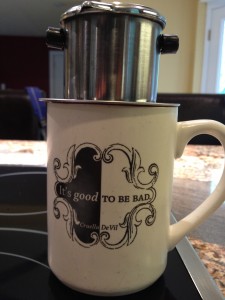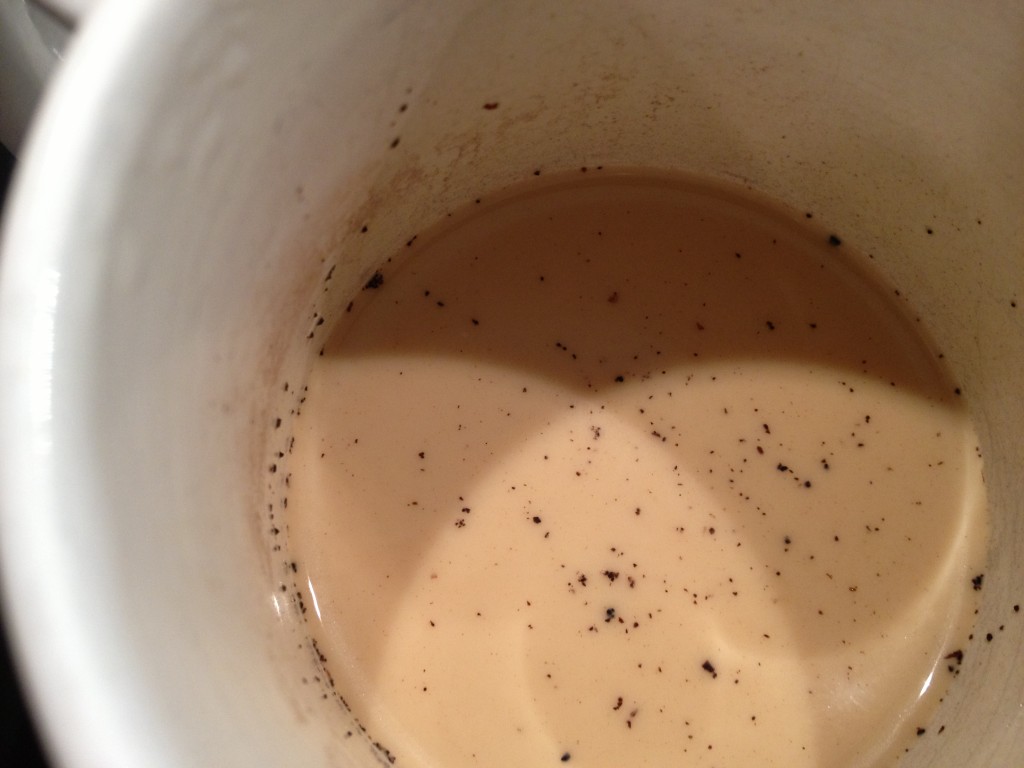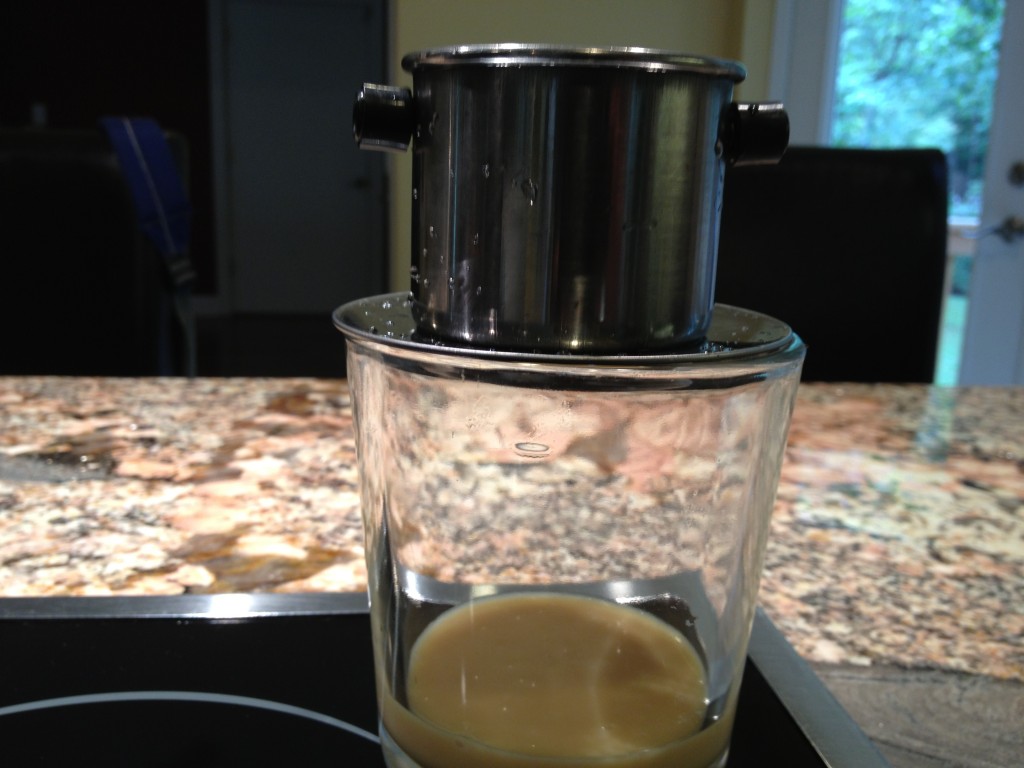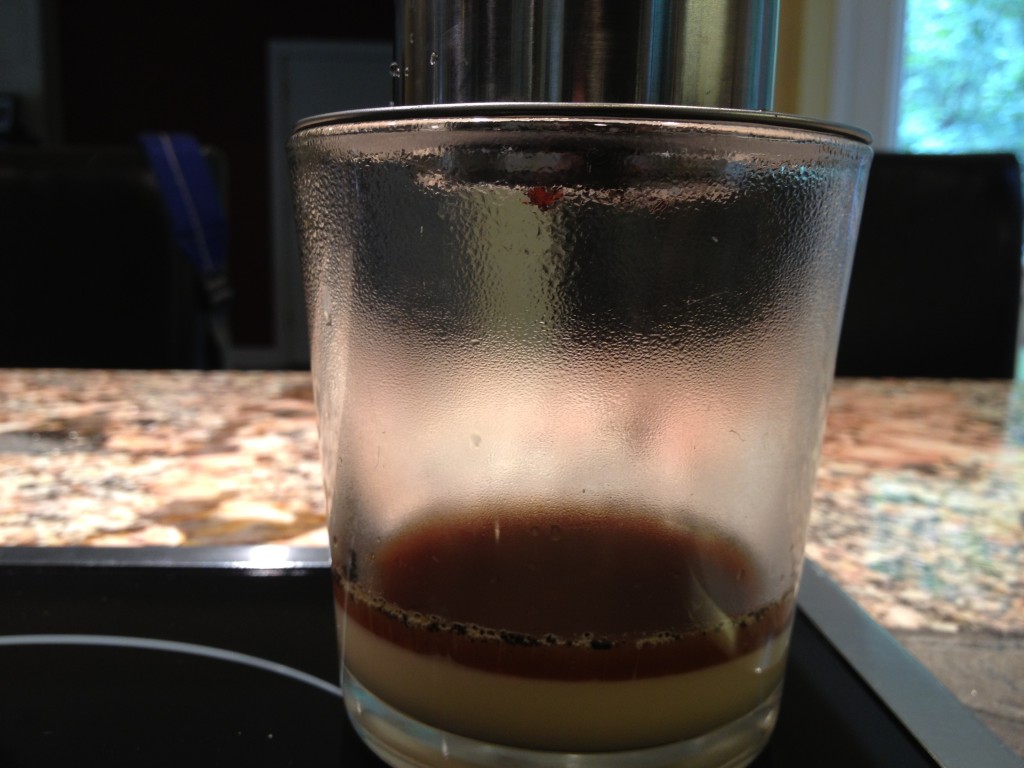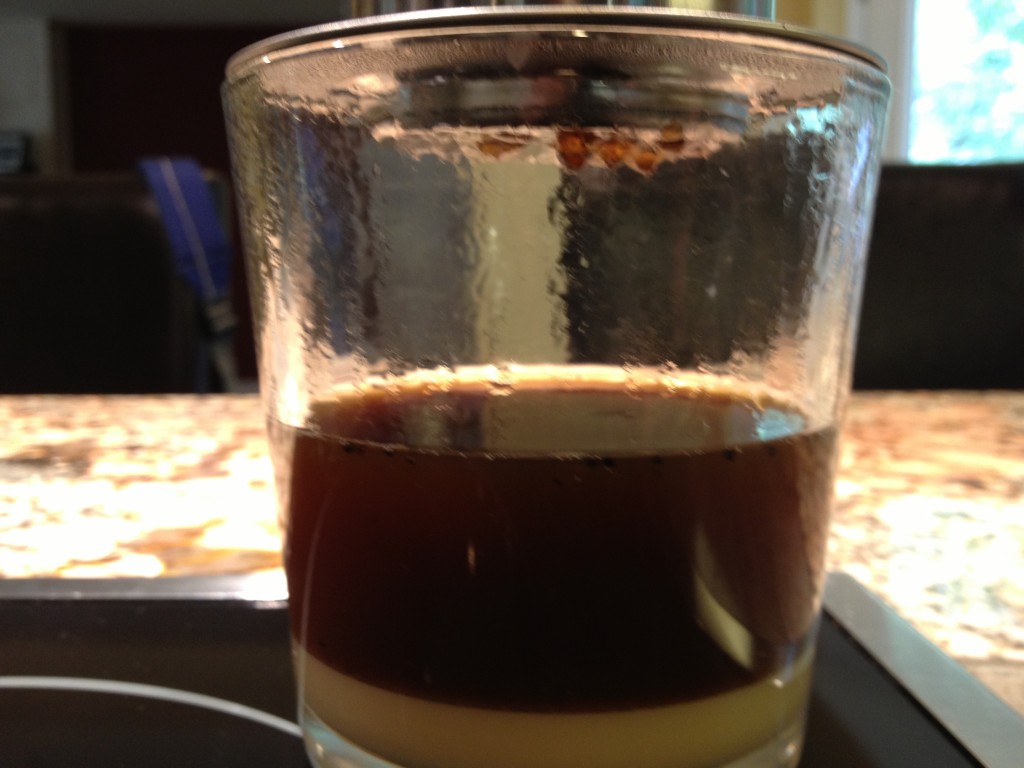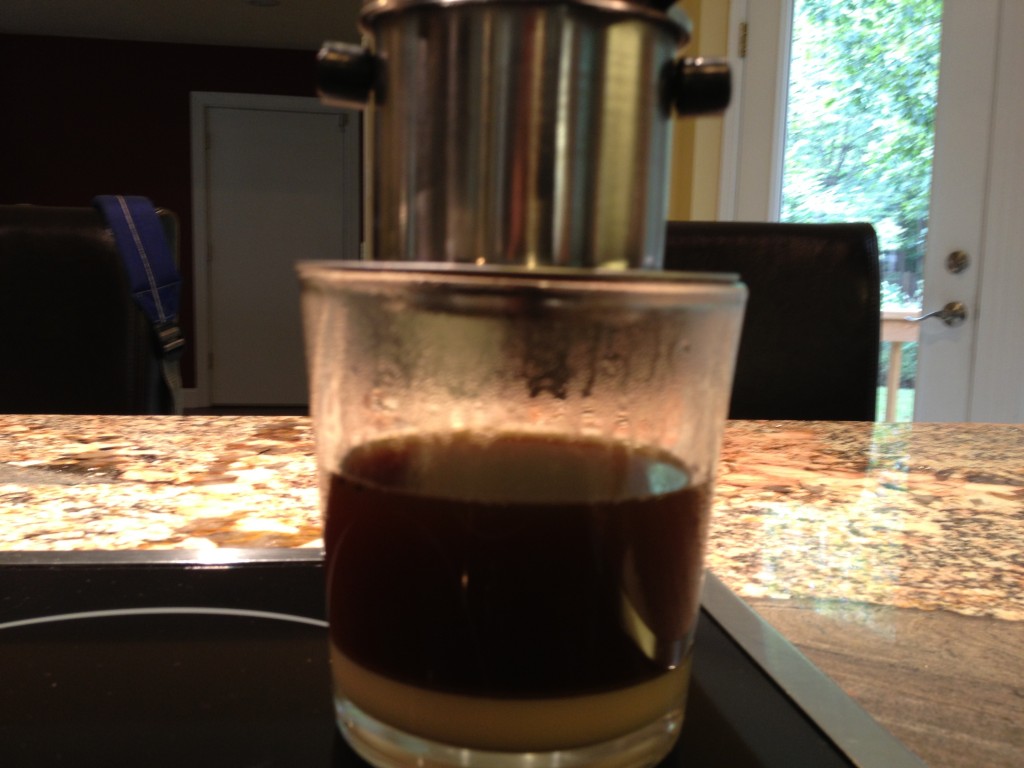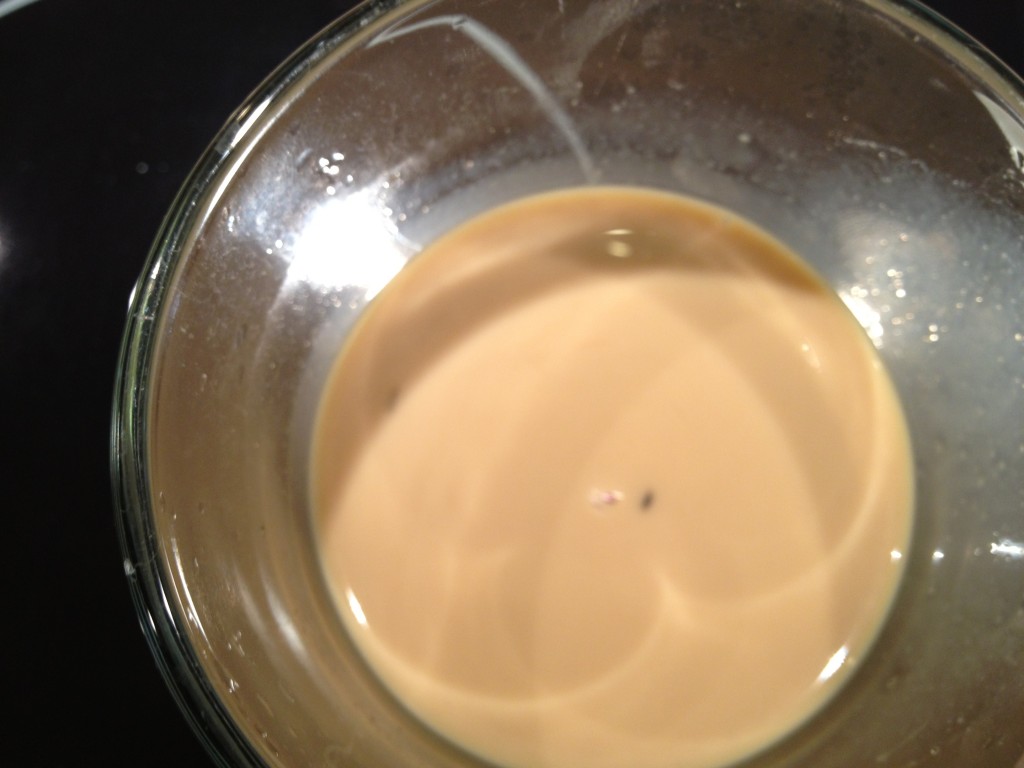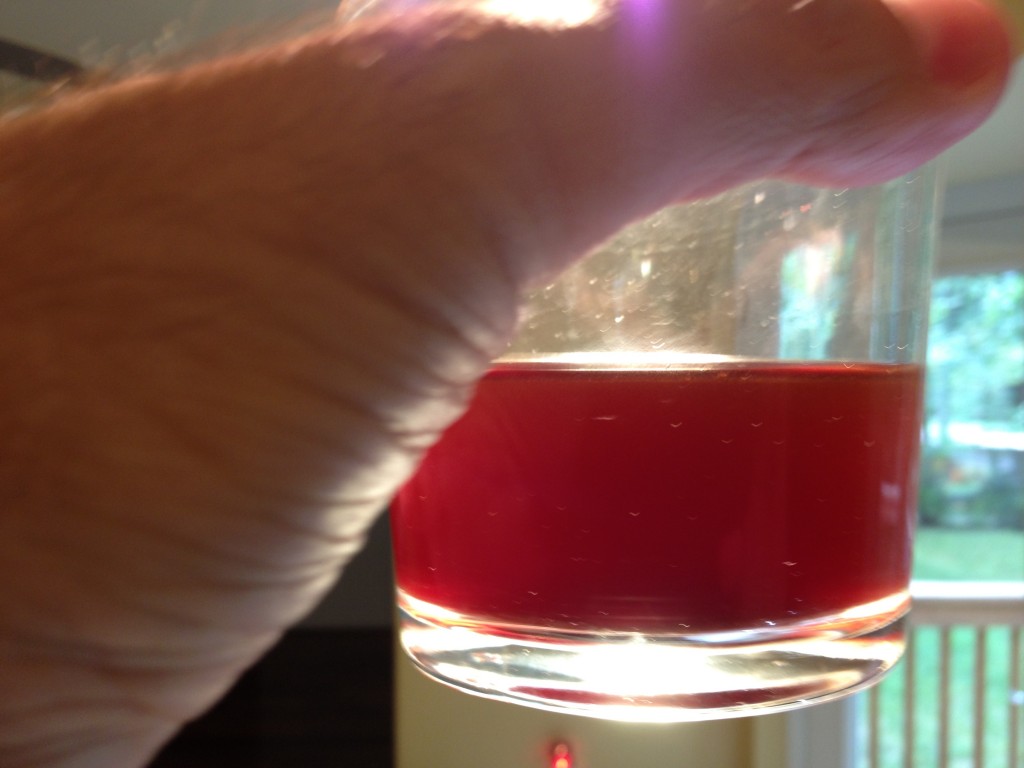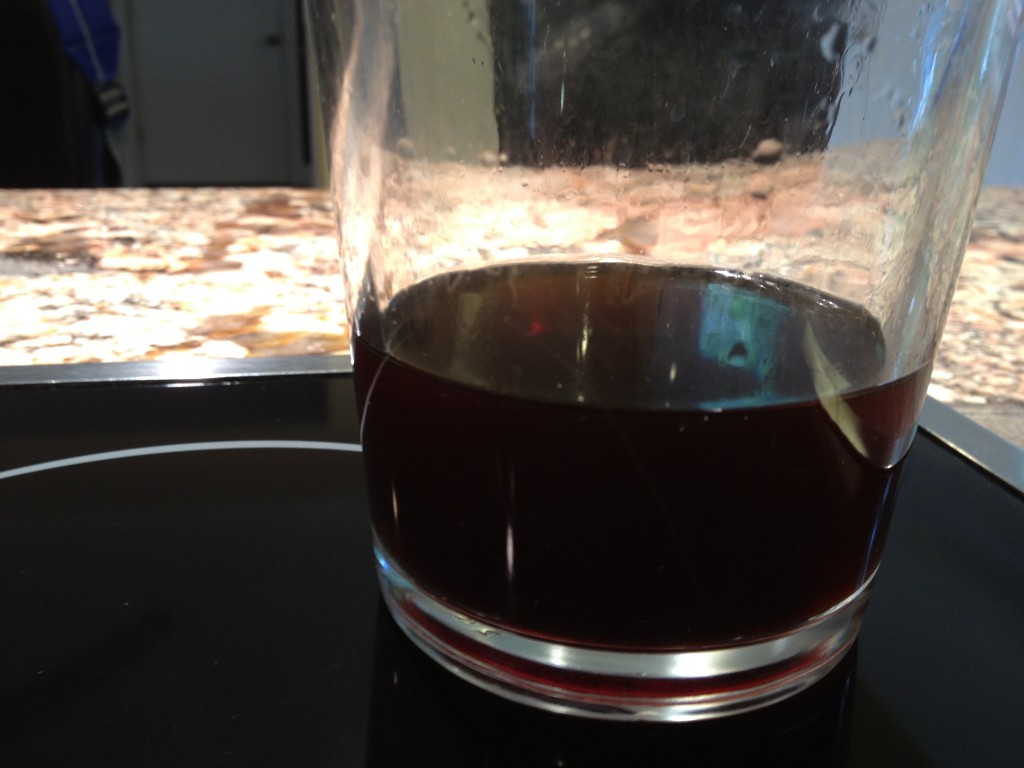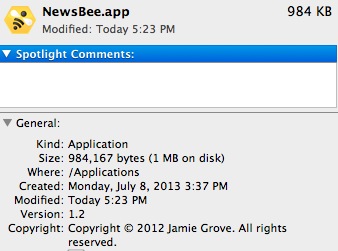After reading a few articles about Asian methods of brewing coffee, I decided to buy a little Vietnamese Coffee Phin and have a go. The quick read is that the coffee is great and experimenting with the phin is pretty fun; sort of like doing pour-overs but without the added requirements of maintaining a handlebar mustache and serving in a mason jar. 🙂
The Process (or at least the way I did it)
1. Grab a mug or clear, vacuum insulated cup.
I prefer the latter because you can watch the process.
2. Add two tablespoons of sweetened condensed milk.
Remember: use sweetened, condensed milk, not evaporated milk.
3. Flip over the lid of your brewer, set the brewer on the lid.
4. Add one scoop of coffee to the brewer.
Many brewers have a small, recessed area at the bottom. Your goal is to fill this and maybe just a tiny bit extra. Use the coarsest grind you can get.
5. Place the filter into the brewer and secure it.
The strength of the coffee is determined by the filter pressure on the grounds. If you have a screw-type filter, you have complete control of the process. If you have a gravity filter, you pop it in and hope for the best.
Naturally, I chose the screw-type filter, but it took a few attempts to get the pressure just right. My recommendation is to tighten the filter until you feel like you’re forcing it then back off half a turn or so. This will give the grounds room to expand during the bloom phase of the brew.
6. Pour a little water into the brewer. Wait.
Coffee should flow into the cup right away. However, let it sit for about 20-30 seconds. During this time, the grounds will expand (aka bloom). This will help maximize extraction.
Does the waiting really matter? Yes. Well, at least it did for me.
7. Fill the brewer and put the lid on top.
Brew time is dependent on how tightly the filter is secured. Generally though, it should be a couple minutes. Keep the lid on so the water stays hot.
8. Remove the lid, flip it over and set it on the counter.
9. Place the brewer on the lid
Is this required? No, but it is a nifty way to keep things nice and neat!
10. Stir the coffee and the milk until it is caramel in color.
Then, stir it again because sweetened condensed milk is thicker than you think.
11. Serve hot or over ice.
Gallery
Gallery Notes:
- Filled the brewer while seated on the mug. Maybe not the best idea.
- Test 2: Sweetened, condensed milk ready to go!
- Test 2: First bit of water. Letting grounds bloom.
- Test 2: Now we’re brewing. Filter could be tighter.
- Test 2: All done!
- Test 2: Much cleaner after filling the brewer prior to seating.
- Test 3: No milk. This is what coffee looks like with a loose filter.
- Test 4: No milk. Tighter filter. About a 3 minute brew time.
Fun facts about Vietnamese Coffee
Did you know Vietnam is the #2 coffee producer in the world? Yep!
The Vietnamese crop is about 97% Robusta, the coffee bean we usually associate with instant coffees. It is generally thought of as more bitter than Arabica. Not surprising really since it has roughly twice the caffeine. That said, the Robusta shrub is a pretty hearty beast. It needs fewer resources to grow and produces a larger fruit yield per plant than it’s milder cousin. What’s interesting is that this “lower quality” coffee is often used in Italian espresso blends because it has such a strong flavor.
Wrapping Up
In my experiment, I did not use Robusta coffee. I used an Italian roast coarse ground for French Press. I tried several cups with different pressure settings on the filter. I also tried making the coffee with and without sweetened condensed milk.
Generally, I found the coffee made using the Vietnamese method to be quite clear and smooth. Maybe 75% less particulate than in a typical French Press. This also means the coffee tasted much brighter (even if my beans were not really the sort one calls “bright”). I could see using a phin as a means to quickly cup different coffees. I could also see buying half a dozen to keep on hand for dinner parties because making coffee with a phin is super fun.
Oh, and as for the sweetened condensed milk? It totally tastes like Caramel Cafe au Lait. Delicious!
